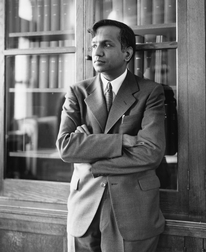From creating the first self-sustaining nuclear reaction to redefining Chicago’s administrative borders, students, faculty, and alumni of the University of Chicago have greatly contributed the story of human discovery.
However, some discoveries made in Hyde Park have gotten more press than others. Indeed, while many are well aware of the impacts of the Chicago school of economics, few know that there is also a Chicago school of literary criticism, or that blood depots, sleep science, and even the missing link between fish and tetrapod were all pioneered and discovered at the University of Chicago. This column, “Reaching into the Unknown,” focuses on some of the lesser-known discoveries at the University of Chicago, ranging from the historic to the obscure and from the fascinating to the downright bizarre. This week, we look back at the accomplishments of Subrahmanyan Chandrasekhar, an astrophysicist.
The University of Chicago is no stranger to breakthroughs in astronomy and astrophysics. Carl Sagan and Edwin Hubble are both alumni, and three out of NASA’s four Great Observatorytelescopes are named after UChicago scholars: Edwin Hubble, Arthur Compton, and Subrahmanyan Chandrasekhar. Chandrasekhar, for whom the Chandra X-Ray Observatory is named, was one of the most important—yet relatively obscure—astrophysicists of the 20th century.
Born in eastern Punjab (in what is now Pakistan) in 1910, Chandrasekhar began university at the age of 14 before being accepted to Cambridge as part of scholarship grant awarded by HRH’s Government of India. After graduating, Chandrasekhar was offered a professorship at the Yerkes Observatory, which he initially declined. However, Chandrasekhar ultimately accepted the offer after being convinced by former University president Robert Maynard Hutchins.
Among his many discoveries, Chandrasekhar contributed immensely to the study of black holes and gravitational waves—even though the existence of both phenomena had only been theorized at the time. He also posited the Chandrasekhar limit, which is a calculation of the maximum mass attainable by a white dwarf star before it implodes on itself to form a black hole or neutron star.
Chandrasekhar would serve as a member of the University of Chicago faculty for 58 years, and guided 45 astrophysics students through their doctoral studies. Chandrasekhar was awarded the 1983 Nobel Prize in Physics (along with William Fowler of the California Institute of Technology) for his work on stellar structure and evolution; however, since the award only recognized his earliest research, he saw it as a denigration of a lifetime’s achievement.
Upon his death, his wife Lalitha Chandrasekhar donated the winnings from his Nobel Prize in Physics to a fellowship annually awarded to an outstanding applicant to the astronomy graduate program at UChicago.








